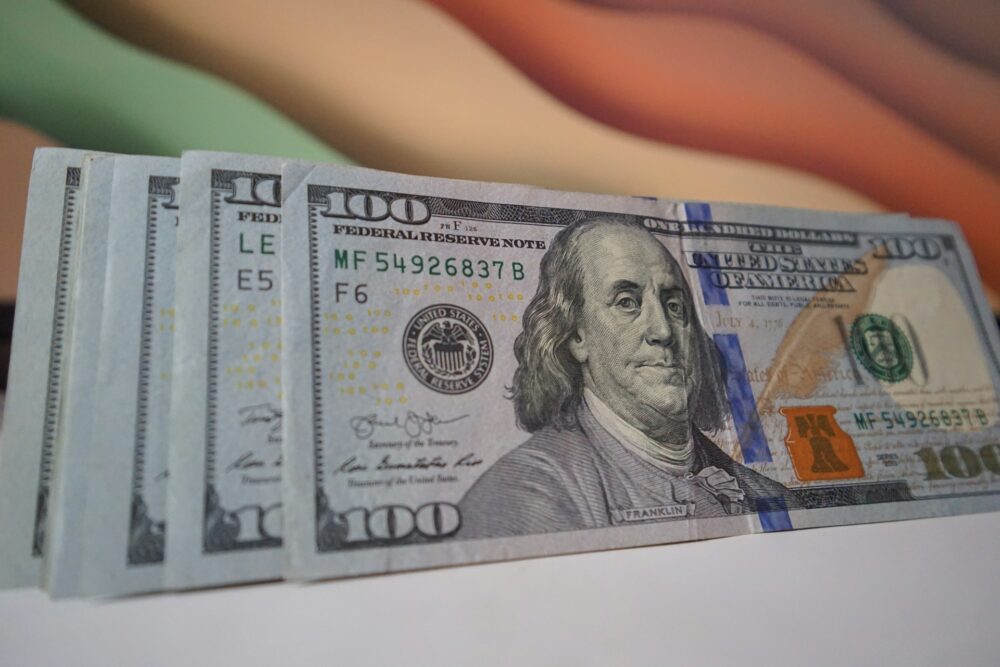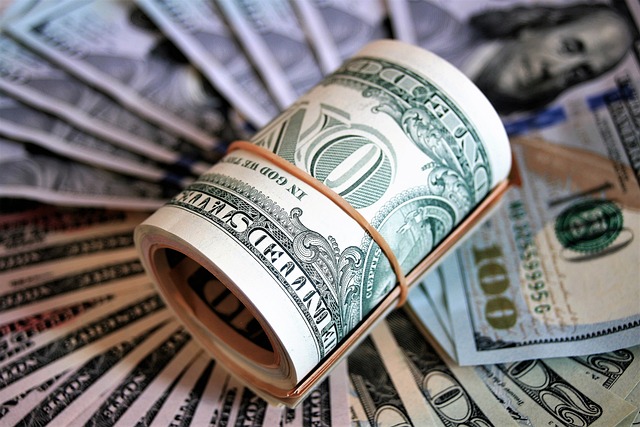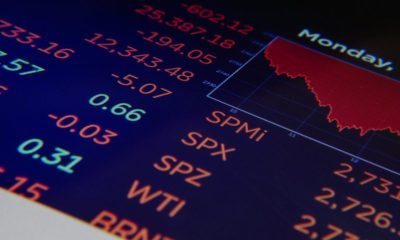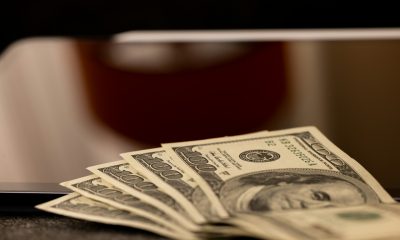Business
Bananas Grow in Washington: Powell and FOMC Pinning for Rate Cuts
The Fed, led by Chair Powell, persists in discussing multiple rate cuts and slowing Quantitative Tightening despite inflation surpassing targets. Inflation at 3.5% y/y in March continues to rise. Powell prioritizes easing monetary policy to alleviate pressure on bond prices, counter corporate debt refinancing costs, and stimulate borrowing amid a struggling middle class and soaring real estate prices.

Powell and the FOMC are pining for rate cuts and to end Quantitative Tightening even though inflation is the most salient issue for businesses, according to the NFIB and ISM surveys.
The Fed is still talking about several rate cuts this year and reducing the pace of Quantitative Tightening by half very soon, despite missing its inflation target of 2% to the north for the past three years. And inflation is heading further away from that target. CPI rose 3.5% y/y in March vs. 3.2% in February.
But Chair Powell and the FOMC remain unfazed
Our central bank wants to ease monetary policy even though we have massive asset bubbles in stocks and in real estate. Home prices are already out of reach of most Americans. According to the WSJ, food prices have increased by 36.5% in the last four years and soaring inflation has causing 78% of consumers to live paycheck to paycheck. Credit spreads are tight and getting tighter, financial conditions are easy and getting easier, and commodity prices have soared.
Yet, Powell is still hell-bent on cutting rates and reducing the pace of Q.T. Why? The Fed cares about banks, not the dollar’s purchasing power and consumers’ living standards. Banks’ assets, which are primarily Mortgage bonds and Treasuries, are underwater. By reducing rates, the Fed hopes to ease the downward pressure on these bond prices. Also, the Corporate refinancing wall is now occurring. $1.8 trillion in corporate debt must be refinanced by the end of 2025.
Refinancing costs are up 45%. In addition, the U.S. Government’s interest payments on its outstanding publicly traded debt will rise to $1 trillion in 2025. The level of National debt is soaring along with the cost of financing that debt. Finally, Household Debt is now $20 trillion, up from $15.6 T in 2019. Consumers have much more revolving credit today than when they were heading into the global financial crisis.
Their holdings of credit card debt, HELOC, and personal loans, has led to an aggregate $200 billion loss in income during the Fed’s current tightening cycle. For all these reasons, Mr. Powell wants and needs to quickly bring down borrowing costs.
The current narrative is that the U.S. economy is strong, and the inflation rate will soon return to the 2% target. But the opposite is the case. Inflation is destroying the middle class; and you cannot have a viable economy without a viable middle class.

Most of the purportedly good economic data is just measuring rising inflation
For example, Retail sales increased by 0.7% for the month of March, which was considerably faster than the Dow Jones consensus forecast for a 0.3% rise. Excluding auto-related receipts, retail sales jumped 1.1%, well ahead of the estimate for a 0.5% advance.
The core control group, which strips out autos and fuel and is the input to determine the increase in GDP, also increased by 1.1%. Of course, Wall Street and the MSFM jumped for joy over the supposedly robust consumer spending. However, they conveniently almost always forget to mention that retail sales are reported in nominal terms. Meaning, what retail sales really measured in March was the surge in prices. After all, it is highly unlikely that the 6% jump in the 19 commodities in the CRB Index during March didn’t translate to a significant increase in consumer prices.
Therefore, market prices are screaming that inflation is rising rapidly, much faster than the nominal 1.1% increase in retail sales. Hence, if you wanted to know what consumer spending was doing in real terms, it would most likely have been a negative number.
But it is much easier to use mendacity when describing the economy as being strong than it is to bemone that inflation is running hot and the government cannot fight it appropriately without throwing the financial system into chaos. In fact, our central bank is preparing to take steps to increase the rate of inflation from its already onerous level.
Inflation is causing yields to rise. The Fed does not control long-term interest rates, and those yields are spiking—causing more stress in the real estate market. Housing starts in March plunged by 14.7%; the estimate was for this figure to be down just 2.4%.
Meanwhile, building permits dropped by 4.3%, whereas the forecast was for a very modest drop of just 0.9%. The home price-to-income ratio is already at an all-time high. And when you add in mortgage rates, taxes, and insurance, purchasing a new home is becoming unaffordable for a surging percentage of Americans. It is impossible to have a strong economy when real estate transactions are frozen, and home prices have become so far dislocated from where they can be supported by the free market.
If home prices and stock valuations returned to their historical average concerning incomes and GDP, it would require a drop of about 40% from current levels; and that would throw the banking system and economy into chaos.
Of course, the bull market in gold (real money) reveals the truth about the economy, inflation, and the U.S. government’s state of insolvency. Why is gold soaring? Of course, there’s the current geopolitical strife, which is particularly acute now with Iran getting involved with a direct attack on Israel in retaliation for the bombing of its diplomatic complex in Syria.
There is also the continuing tailwind from foreign central bank buying to diversify their currency reserves outside of U.S. dollars and into gold, which is outside the reach of sanctions and confiscations. The truth is many central banks have been stockpiling gold. According to the World Gold Council’s Goldhub data in January 2024, they added 39 tonnes (metric ton) to global gold reserves with Turkey and China being two big buyers.
The Central Bank of Turkey was the largest buyer, increasing its official gold holdings by 12 tonnes. Additionally, the People’s Bank of China saw its gold reserves rise by 10 tonnes, marking the 15th consecutive month of additions. Other central banks, including India, Kazakhstan, Jordan, and the Czech National Bank, also contributed to the net purchases.
But as central banks have been stocking up on gold, the average investor has been selling paper gold, leading ETF’s to see net outflows. According to the World Gold Counsil, ETFs lost US $469 million in March and lost a total of $2.8 billion over the last eight months.
Meanwhile, anecdotal evidence points to retail investors’ interest in owing physical precious metals, with beloved retailer Costco getting into the gold rush. Costco’s accessibility makes it easier for the average person to add precious metals to their portfolio. You can now purchase gold bars and silver coins as a Costco member. Costco’s venture into precious metals has garnered attention and is offered at a lower cost than most competitors, bringing gold cheaply to the masses. In fact, the offering is having so much success that the retailer persistanly runs out of stock.
But I believe the primary reason consumer demand for gold will increase is the epiphany on the part of investors that the Fed is losing control of inflation and is now chronically engaged in an interest rate suppression regime. In other words, our central bank will most likely be caught in the trap of being forced to perpetually print trillions of dollars each year–creating more inflation–and purchasing Treasuries in order to try and prevent interest rates from inexorably spiraling upward.
The outcome from this practice will be falling real interest rates; where nominal interest rates rise more slowly than the rate of inflation. This is a central bank’s last ditch effort to try and assuage the government’s insolvent condition. This is the environment that gold thrives in the most.
Of course, this sounds far-fetched to ever happen in the United States of America. But, how many people believed 20 years ago that the US would be running multiple trillion-dollar annual deficits, most of which are monetized by the Fed with alacrity? Sadly, Washington D.C. is turning the once mighty US economy into a Banana Repbulic. The investing environment is changing rapidly. The buy and hold portfolio needs a big overhaul.
__
(Featured image by Blogging Guide via Unsplash)
DISCLAIMER: This article was written by a third party contributor and does not reflect the opinion of Born2Invest, its management, staff or its associates. Please review our disclaimer for more information.
This article may include forward-looking statements. These forward-looking statements generally are identified by the words “believe,” “project,” “estimate,” “become,” “plan,” “will,” and similar expressions. These forward-looking statements involve known and unknown risks as well as uncertainties, including those discussed in the following cautionary statements and elsewhere in this article and on this site. Although the Company may believe that its expectations are based on reasonable assumptions, the actual results that the Company may achieve may differ materially from any forward-looking statements, which reflect the opinions of the management of the Company only as of the date hereof. Additionally, please make sure to read these important disclosures.

-

 Crypto5 hours ago
Crypto5 hours agoBitcoin in 2025: Mainstream Momentum, Price Weakness, and a Pivotal Year Ahead
-

 Fintech2 weeks ago
Fintech2 weeks agoN26 Hires UBS Executive to Lead Turnaround Amid Regulatory Pressure
-

 Biotech1 week ago
Biotech1 week agoCAR-T Therapies: From Breakthrough Cancer Treatment to Faster, Safer, and More Accessible Immunotherapy
-

 Cannabis2 weeks ago
Cannabis2 weeks agoLuxembourg’s Cannabis Paradox: Legal at Home, Restricted Everywhere Else
























